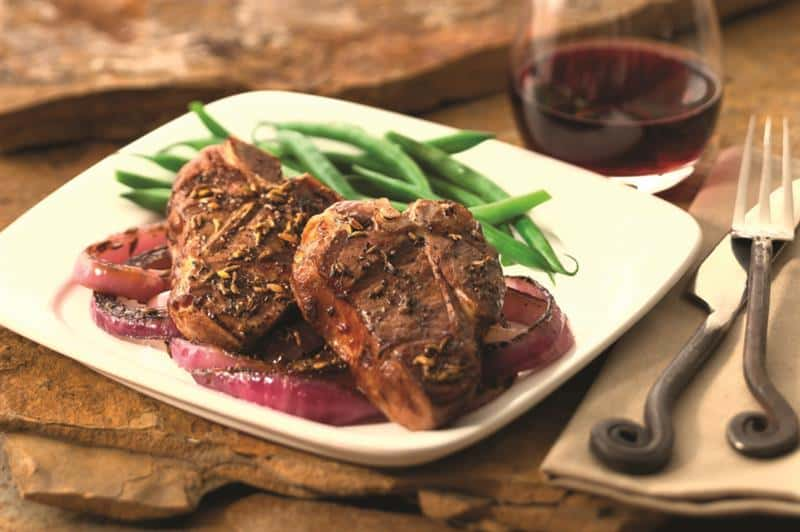The COVID-19 pandemic changed the way food consumers shop and eat, and meat reaped the benefits.
A consumer survey conducted by 210 Analytics in January 2021 looked at trends among 1,501 shoppers leveraged against 16 years of trend lines and showed everything changed in 2020. The survey addressed all meat, imported and domestic, sold through retail food outlets during the 52 weeks prior to December 27, 2020, in the US. The Power of Meat report was sponsored by CRYOVAC and presented at the 2021 Annual Meat Conference.
For 2020, retail meat department sales grew 11% in pounds and 19.2% in dollars. Fresh meat sales were up 20.7% in dollars and 11.2% in pounds while processed meats increased 16.2% (dollars) and 10.5% (pounds). In total, that came to $82.5 billion and 21.8 billion pounds. The study concluded that lamb retail sales (domestic and imported) increased $97 million and 9 million pounds.
According to the study, meat dollar sales at retail outlets spiked 52.3% over 2019 in March of 2020 (42.1% in pounds), then gradually declined over the summer. Sales were still up 12.9% over 2019 in December. At 10 months into the pandemic, 42% of consumers were still trying different types of meat and new brands.
Generational spending during 2020 was led by Baby Boomers (34% of dollars), Generation X (33%), Millennials (25%), Seniors (8%) and Generation Z (less than 1%).
Increased Potential
Even into early 2021, 43% of shoppers are buying more meat than pre-pandemic, with 68% buying a wider variety of meat types and cuts. In addition to sales growth, the study found increased meat IQ among consumers. By 2021, 51% consider themselves knowledgeable; 31% assume they know the basics. “During the pandemic and continuing into 2021, the American Lamb checkoff put emphasis on helping consumers learn more about what our great product offers, how to prepare it, and all the opportunities to satisfy their family’s desire for variety and flavor,” says American Lamb Board Chairman Gwen Kitzan, Newell, SD.
Power of Meat follows the mantra that more meat knowledge leads to more varieties of meat products purchased and thus consumers cooking with meat more often. Consumers’ self-described knowledge of nutrition changed little, but they expressed a need for more preparation education. People are more eager to try new recipes and cooking appliances like air fryers and instant pots. Taking their inspiration from routine meals they already know how to cook declined from 74% in 2019 to 51% in 2020, replaced by recipes and cooking tips from friends and family, YouTube, recipe websites and social media posts.
That all means more money spent on meat/poultry and meat products as consumers continue to enjoy the benefits of buying, preparing and consuming meat.
Shopping Habits Changed
Overall, fresh foods gained in sales while prepared deli meals dropped as shoppers made fewer trips to the store and increased their purchases per trip. More people bought in bulk, rather than one meal at a time, with a greater focus on one trip to the grocery store for all needs.
Sales by dollar share decreased for specialty/health grocery outlets, discount groceries, and supercenters, while increasing 44.1% for traditional grocery stores. The dollar share for food clubs increased 9.6%.
Online grocery purchases increased with 56% of surveyed consumers saying they purchased groceries online. Eighteen percent made online food purchases at least once a month, with 12% ordering every 2-3 weeks and 10% ordering weekly. They were more likely to include fresh items than before.
When shopping, most shoppers, 93%, started with their favorite or frequently ordered items, then branched out from there to site specials and recommendations. Online refrigerated meat and poultry sales nearly doubled in 2020, but most still prefer a frozen product. Chicken led the way among proteins.
Consumers showed a nearly 20 point shift in trust of case-ready products over meat cut and packaged in the store. Likewise a preference for name brands increased, as did an interest in processed meats, with 61% of consumers citing better quality, 55% better taste and 37% food safety as the reasons for their choices.
The core online grocery shopper remains the urban millennial with a relatively high income and kids at home, though the gap between the traditional online shopper and other demographics closed significantly during the pandemic. Their meat purchases highlighted value added meat, blended items and meat alternatives as they emphasized healthy meat along with environmental and social consciousness.
Cooking and Eating Habits Changed
The share of meat meals prepared at home increased sharply at the beginning of the pandemic, but began to level off by year’s end. Breakfasts and lunches formerly served at school or outside sources were included in the tally.
Value added meat products across all proteins saw growth, along with prepared side dishes, as marketers worked to address meal planning fatigue by the end of the year when 68% of consumers said they buy valued-added meat/poultry sometimes or frequently. That includes a rising interest in pre-cooked meat. Still, 34% of consumers say they would like to decrease their meat consumption, primarily citing health and spending issues.
###
American Lamb Board


